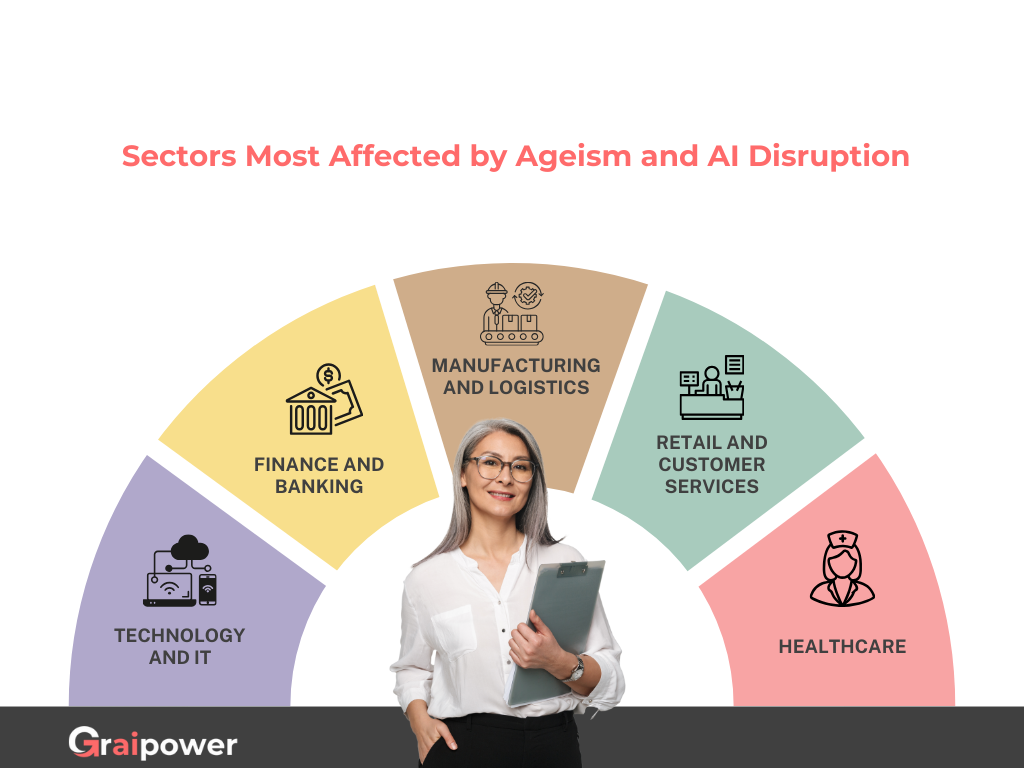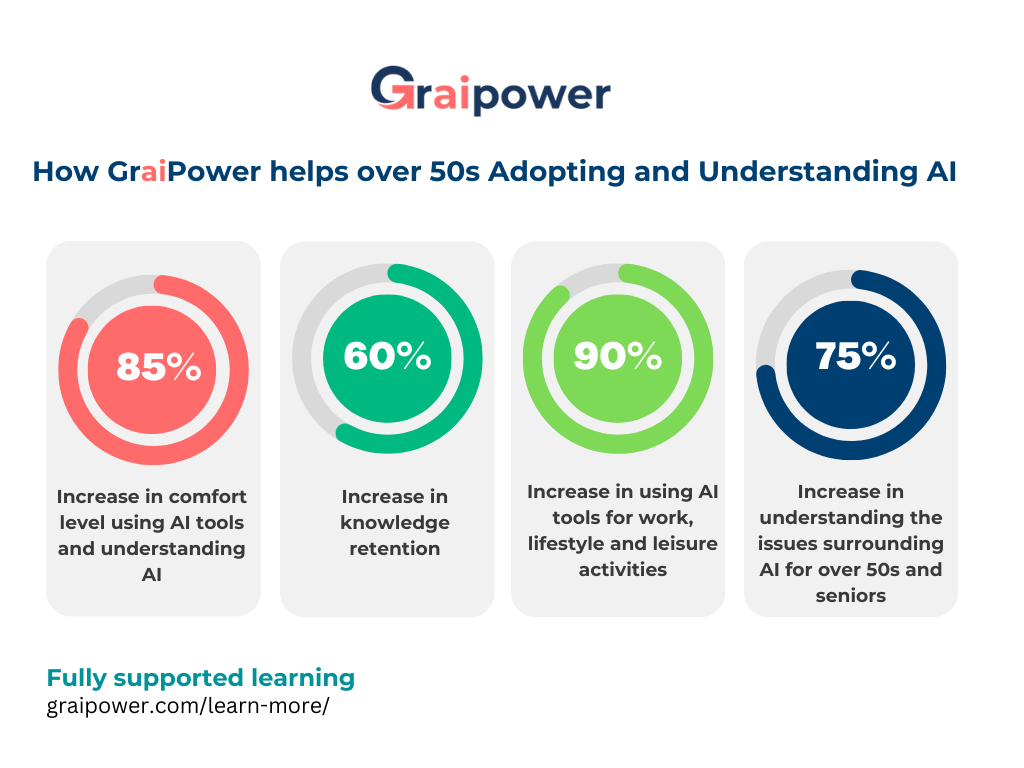AI Training for the Mature
Is Ageism a Barrier to Employment for Over 50s in the Age of AI?
The following is a summary of the full research paper available free of charge on GraiPower
Introduction
Artificial intelligence (AI) is revolutionizing the workplace, but for older workers, this transformation presents new challenges. While AI creates opportunities for efficiency and innovation, it also exacerbates age discrimination in hiring, career progression, and job retention. Are workers over 50 being unfairly excluded from employment in an AI-driven world? If so, what can be done to ensure they remain competitive?
This summary explores the impact of AI on ageism in the workplace, identifying industries where older workers are most affected and providing insights into how AI skills can help bridge the employment gap.
The Growing Problem of Ageism in Employment
Ageism in the workforce is not new. Studies by organizations like AARP reveal that a significant percentage of workers over 50 experience age discrimination. Many employers perceive older employees as resistant to change, technologically challenged, or less adaptable than younger workers.
AI-driven hiring processes can make this issue worse. Automated recruitment systems often filter candidates based on keywords, employment gaps, and past experiences—factors that disproportionately affect older applicants. The result? Qualified professionals over 50 may never even get the chance to interview for a job.
Industries Most Affected
While AI-driven changes impact nearly all sectors, some industries exhibit higher risks for age-related job displacement:

Technology & IT – Despite their experience, older tech professionals face difficulties securing roles in a youth-centric industry.
Finance & Banking – AI automation is replacing traditional roles, and many older workers struggle to transition to data-driven financial services.
Manufacturing & Logistics – Automation is eliminating traditional manual jobs, leaving many older workers without alternatives.
Retail & Customer Service – Self-checkout, AI-driven customer support, and e-commerce reduce the need for experienced human employees.
Healthcare – AI is reshaping diagnostics, transcription, and administrative roles, requiring employees to upskill in order to remain relevant.
Statistics Highlighting the Challenge
According to the U.S. Bureau of Labor Statistics, workers over 50 take longer to find new jobs compared to younger candidates.
A ProPublica and Urban Institute study found that 56% of workers over 50 are pushed out of long-term jobs involuntarily.
The OECD reported that older workers are less likely to participate in AI-related reskilling programs, limiting their career mobility.
Overcoming Ageism with AI Skills
Rather than being left behind, workers over 50 can take proactive steps to integrate AI skills into their professional toolkit. Success stories prove that older employees who invest in learning AI-powered tools and technologies can transition to new careers and stay relevant.
Case Study: From Retail to AI-Powered Customer Support
Maria, a 52-year-old retail manager, lost her job due to automation. She took online AI training in chatbot integration and secured a new role in AI-driven customer service.
Case Study: From Factory Worker to AI Technician
James, a 58-year-old factory worker, retrained in AI-powered manufacturing systems and was rehired as a maintenance technician for automated processes.
How GraiPower is Helping
At GraiPower, we provide the resources and community support needed for professionals over 50 to thrive in an AI-driven workforce. By joining our platform, you get:
Self-paced AI courses tailored for older learners
A supportive online community for knowledge-sharing and networking
Live webinars and mentorship programs
A free e-book: GETTING STARTED WITH AI – A PRACTICAL GUIDE FOR LEARNERS OVER 50

Conclusion
AI is reshaping the job market, and older workers must adapt to stay competitive. While ageism remains a challenge, learning AI-related skills and leveraging community support can help professionals over 50 secure meaningful employment.
Want to dive deeper into this critical issue?
Become a free GraiPower member today and access the full research document, featuring in-depth analysis, case studies, and actionable insights to help you succeed in the AI era.
